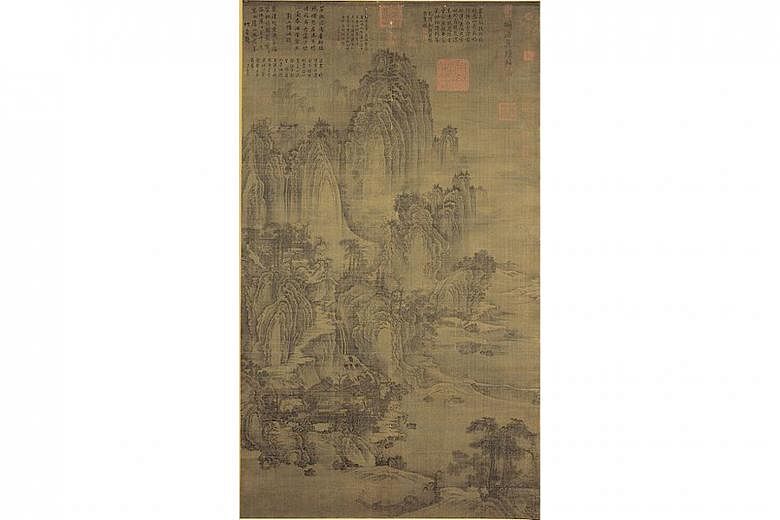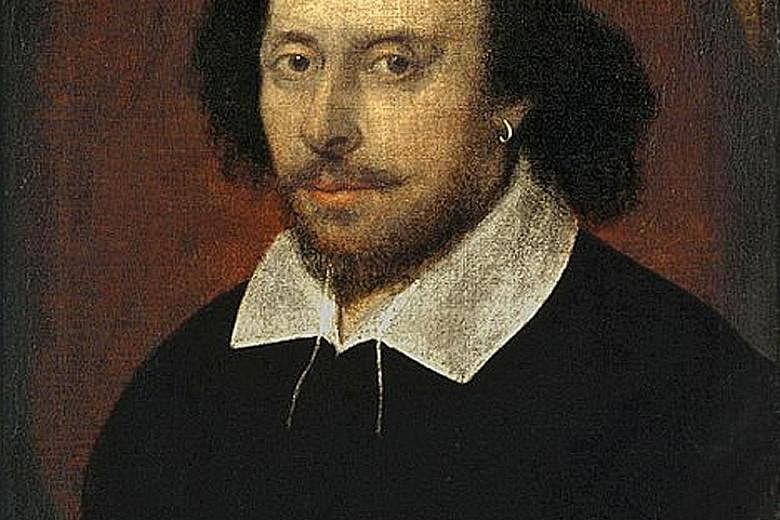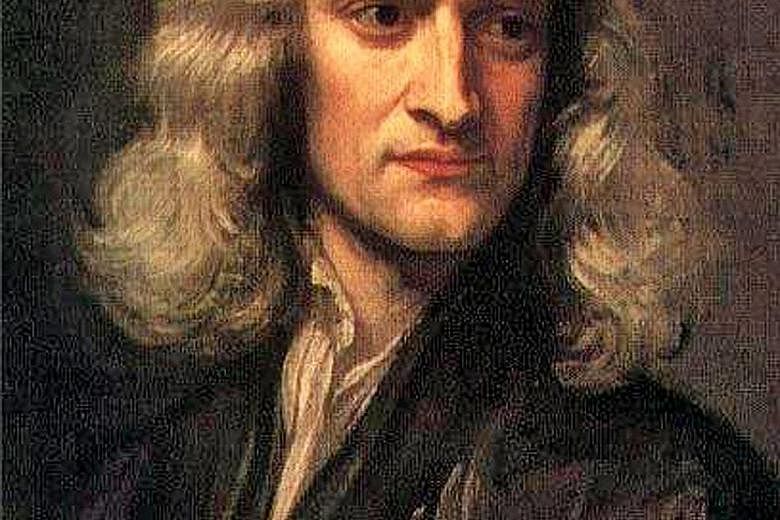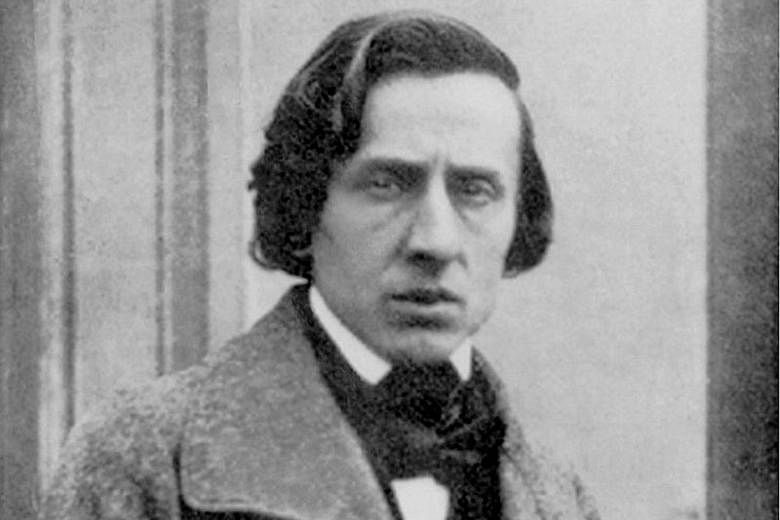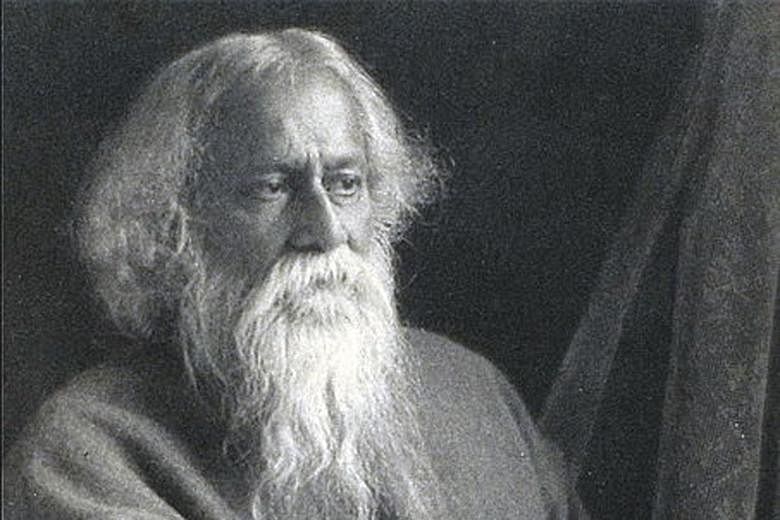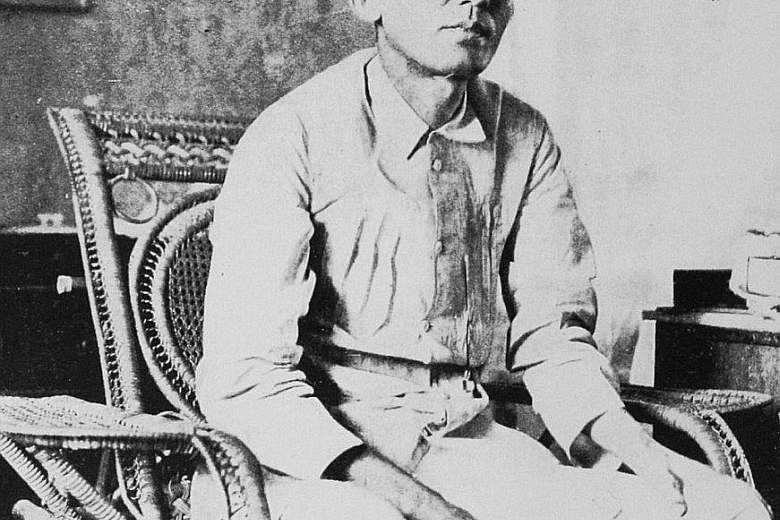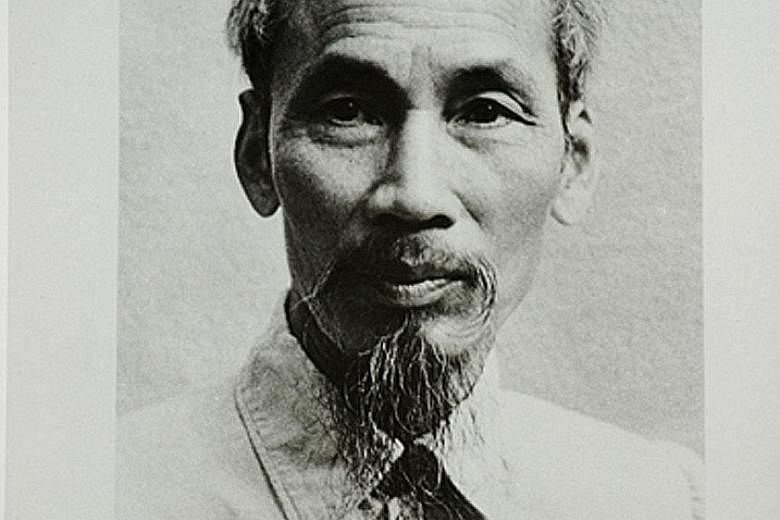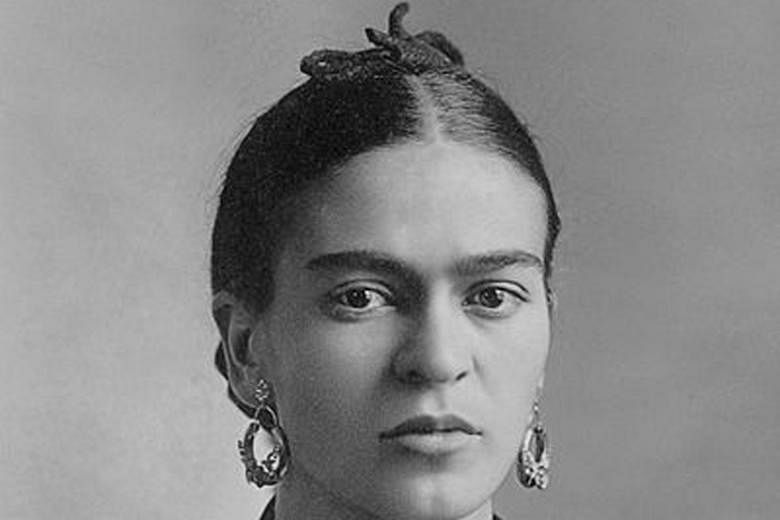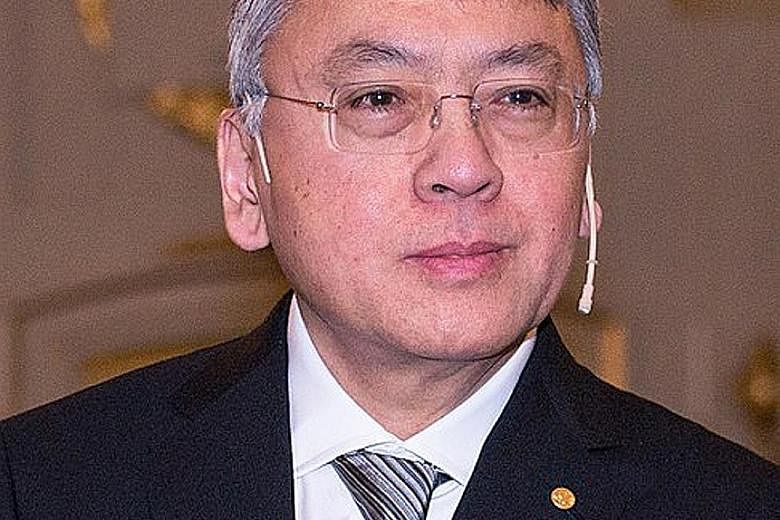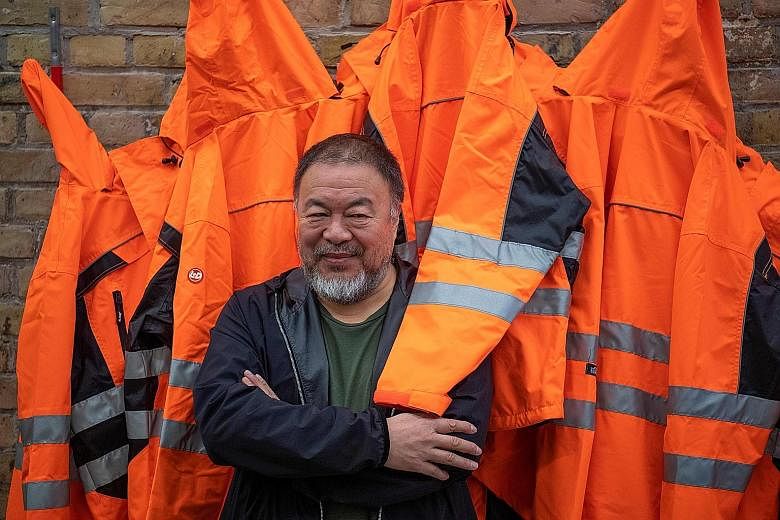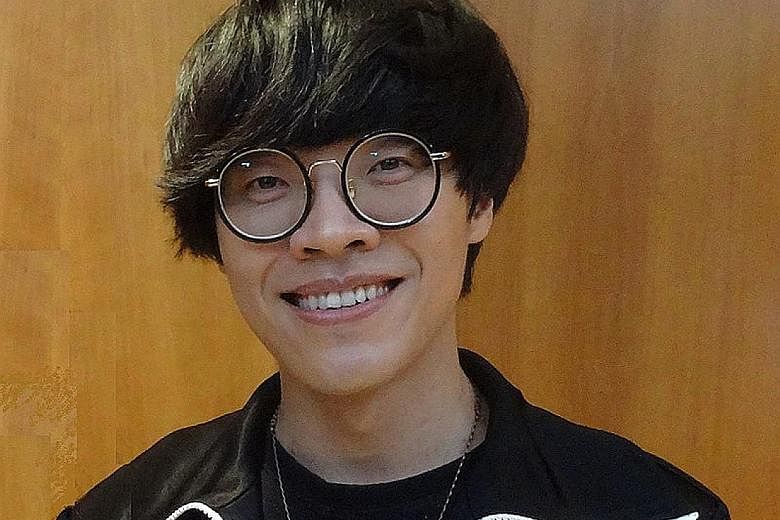Being in isolation can lead to a lack of motivation and productivity.
But solitude does not always sap the soul and, throughout history, there have been many who have been prolific in isolation - from literary great William Shakespeare to revolutionary politician Ho Chi Minh.
Here are 12 people who found inspiration during their time away from the world.
1 JING HAO
Chinese landscape painter and theorist Jing Hao (855-915) lived through the Five Dynasties and Ten Kingdoms period, a time of political upheaval and division.
The pioneer of the Northern Song landscape style is a critical figure in the development of monumental landscape painting, pushing forth a national style that would influence many Northern Song painters.
His artistic clout was further reinforced by his authoritative treatise Bifa Ji (Notes On Brushwork) - a collection of theories of the Northern Song school. It would be a definitive guide for more than a century.
Jing's accomplishments came while he was deep in the northern Taihang mountains, where he retreated to avoid the political upheaval below. The isolated region of dense cloud forests and dramatic jagged peaks was where he experimented with ink-wash techniques.
2 WILLIAM SHAKESPEARE
Rumour has it that the Bard (1564-1616) wrote King Lear during the summer of 1606, when a bubonic plague outbreak shut all London theatres, including the Globe Theatre.
No one knows for sure if he did pen the grim and brutal tragedy during that time, but it is rife with images of disease and death. On Boxing Day in 1606, the play was performed for the first time.
3 ISAAC NEWTON
In 1666, the year English physicist Isaac Newton (1643-1727) is believed to have discovered gravity, the Great Plague of London was ravaging the country.
Then a fresh-faced student in his early 20s, Newton had been sent home from Cambridge University to his family estate about 100km away.
Surrounded by verdant fields - and, yes, apple trees - he embarked on what he later called his annus mirabilis, or "year of wonders".
Besides formulating laws of motion and theories of calculus, he also experimented with the field of optics.
4 FREDERIC CHOPIN
Polish composer Frederic Chopin (1810-1849) was a leading symbol of the Romantic period - both for his musical genius and gossip-worthy personal life.
He struggled with ill health for much of his life, but a miserable and lonely winter spent in Majorca, Spain, proved to be one of his most productive periods.
In the winter of 1838, together with French writer Amantine Dupin, with whom he shared a turbulent relationship, and her two children, he visited Majorca in the hope of improving his health and that of Dupin's son in the warmer Mediterranean climate.
But when the townsfolk discovered Chopin and Dupin were not married, they became inhospitable and the group sought shelter in a rundown monastery.
Despite the difficult conditions and his deteriorating health, Chopin completed 24 Preludes, Op. 28, one of his most famous works, on a small piano. It includes the famous Raindrop Prelude, inspired by the incessant sound of rain at the monastery.
5 RABINDRANATH TAGORE
Known as the Bard of Bengal, Rabindranath Tagore (1861-1941) was an impressive polymath who wrote short stories, novels and songs.
In 1913, he became the first non-European to win the Nobel Prize in Literature for his poetry collection Gitanjali (Song Offering).
His final five years were marked by chronic pain and extensive periods of illness, but that did not stop his pen.
Developing an interest in science in his later years, he wrote many stories on the topic, including Se (1937), Tin Sangi (1940) and Galpasalpa (1941).
The poetry penned in his twilight years is considered to be among his finest work. His final poem was penned a week before his death.
Today, the birth anniversary of the titan of Bengali culture is still celebrated, and his death anniversary mourned.
6 APOLINARIO MABINI
An educator, lawyer and politician, Apolinario Mabini (1864-1903) was the brains of the Philippine Revolution, which lasted from 1896 to 1898. He would also become the country's first prime minister.
The son of a market vendor, he received a scholarship to study in Manila and made ends meet by tutoring children. After earning his law degree in 1894, he joined revolutionary society Katipunan.
In 1895, he was struck by polio and lost the use of his legs. The Philippine Revolution broke out a year later and he spent much of his time in a hospital near the hot springs in Los Banos, Laguna.
He kept busy, writing the pamphlets titled Ordenanzas De La Revolucion (Ordinances Of The Revolution), and El Verdadero Decalogo (The True Decalogue).
El Verdadero Decalogo was instrumental in the drafting of what would eventually be known as the Malolos Constitution, the basic law of the First Philippine Republic.
7 HO CHI MINH
North Vietnamese revolutionary and politician Ho Chi Minh (1890-1969) is known for many things - chief among them for being the architect of modern Vietnam. But not many know he was also a poet.
In 1942, the leader of the Viet Minh independence movement was arrested in southern China by Kuomintang forces led by Chinese nationalist Chiang Kai-shek.
Accused of being a spy, he was imprisoned for 14 months, during which he wrote a poetry collection titled Poems From The Prison Diary.
Today, the anthology is considered one of Vietnam's national treasures and is used as teaching material in many of the country's high schools.
8 FRIDA KAHLO
Mexican painter Frida Kahlo (1907 -1954) was no stranger to isolation. As a child, she contracted polio and was bedridden for months.
In September 1925, a trolley car collided with the bus she was on, confining her in the hospital with severe injuries.
There, she completed the first of more than 50 self-portraits, one of which depicts her in a deep red velvet dress against a background of roiling waves.
Solitude seemed to be her muse, as she once said: "I paint myself because I am so often alone and because I am the subject I know best."
9 KAZUO ISHIGURO
In just four weeks, British author Kazuo Ishiguro wrote his Booker Prize-winning novel The Remains Of The Day (1989).
Then 32, he holed up in his study and wrote feverishly from 9am to 10.30pm, six days a week. His only breaks were an hour-long lunch and a two-hour dinner.
During this period - which he dubbed a "crash" - nobody visited the house he shared with his wife Lorna in south London. Neither did he take calls nor reply to mail.
In a 2014 article for The Guardian, Ishiguro, now 65, said he reached a mental state in which his fictional world became more real to him than the one he was living in.
10 CHARLI XCX
English singer Charli XCX spent much of her time in isolation working on an album.
Titled How I'm Feeling Now, the 27-year-old said in a public Zoom call on April 6: "The nature of this album is going to be very indicative of the times, just because I'm only going to be able to use the tools I have at my fingertips to create all music, artwork, videos, everything."
She invited her fans to get involved in the project, which she dubbed a "do-it-yourself" collaborative process. She uploaded demos and scattered lyrics, asking fans to share feedback on which songs they enjoyed and which they hoped to hear completed.
The album is slated for release on Friday.
11 AI WEIWEI
Chinese artist and civil rights activist Ai Weiwei, 62, was put under house arrest in November 2010 for planning a party marking the demolition of his Shanghai studio.
According to the BBC, he wanted to serve his guests river crabs and the authorities reportedly feared it would become a political statement.
The crustacean's Chinese name, he xie, sounds like the word "harmonious" in Chinese. Both are slang terms used by netizens to refer to China's Internet censorship.
The arrest lasted two days, but Ai was barred from leaving the country soon after.
He then designed the Serpentine Gallery Pavilion in London's Kensington Gardens over Skype calls with Swiss architects Jacques Herzog and Pierre de Meuron.
The coil-shaped cork structure was unveiled in 2012, the year of the Summer Olympics in London, although he had to miss the ceremony.
12 CROWD LU
In 2005, during his freshman year in university, Taiwanese singer-songwriter Crowd Lu was injured in a traffic accident and hospitalised for several months.
In that time, he picked up the guitar and worked on musical compositions.
Lu, now 34, released his first album, 100 Ways Of Living, in 2008. The following year, he bagged the Best New Artist and Best Composer prizes at the 20th Golden Melody Awards in Taipei, the Chinese equivalent of the Grammy Awards.
